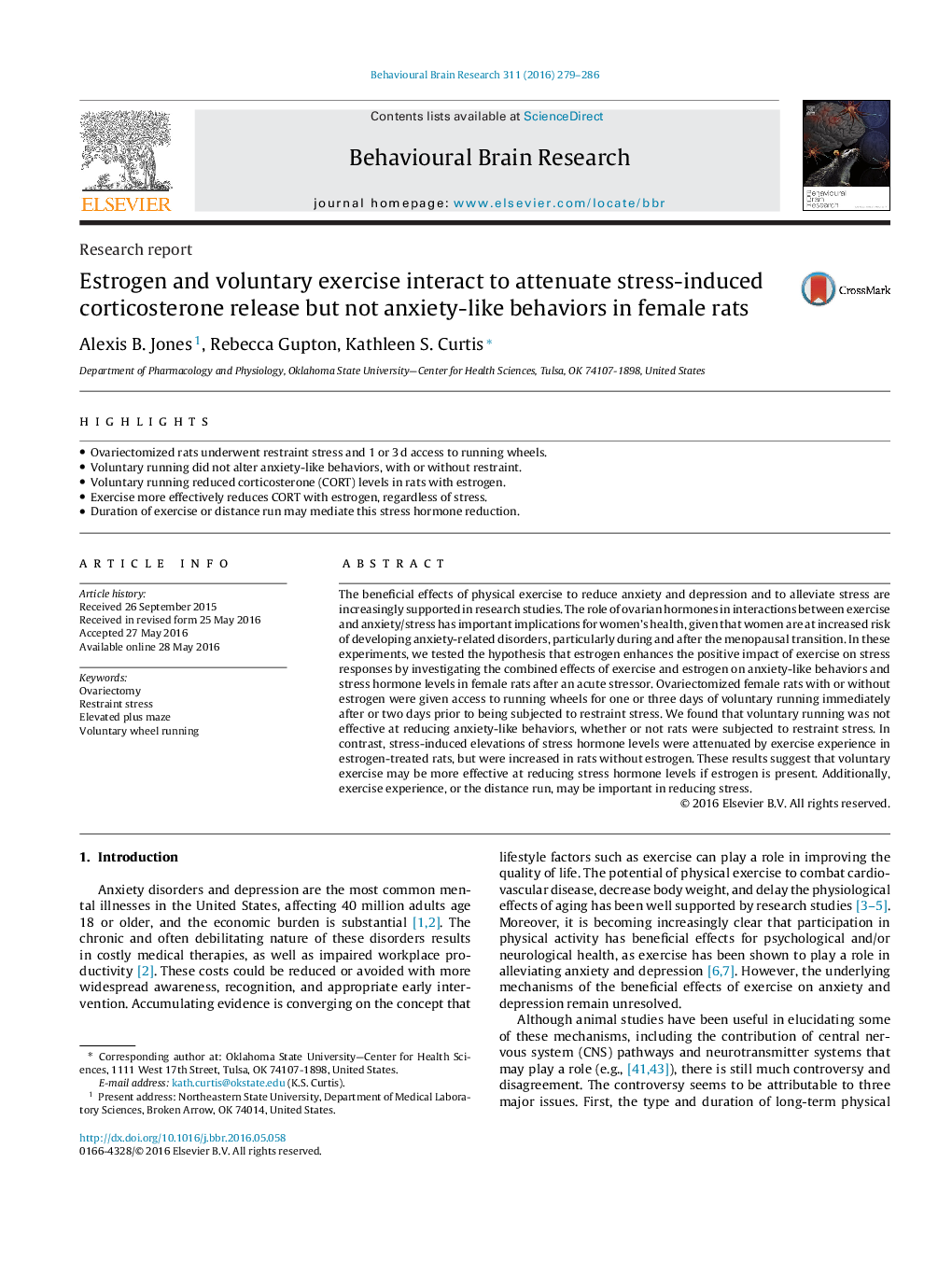| Article ID | Journal | Published Year | Pages | File Type |
|---|---|---|---|---|
| 6255941 | Behavioural Brain Research | 2016 | 8 Pages |
â¢Ovariectomized rats underwent restraint stress and 1 or 3 d access to running wheels.â¢Voluntary running did not alter anxiety-like behaviors, with or without restraint.â¢Voluntary running reduced corticosterone (CORT) levels in rats with estrogen.â¢Exercise more effectively reduces CORT with estrogen, regardless of stress.â¢Duration of exercise or distance run may mediate this stress hormone reduction.
The beneficial effects of physical exercise to reduce anxiety and depression and to alleviate stress are increasingly supported in research studies. The role of ovarian hormones in interactions between exercise and anxiety/stress has important implications for women's health, given that women are at increased risk of developing anxiety-related disorders, particularly during and after the menopausal transition. In these experiments, we tested the hypothesis that estrogen enhances the positive impact of exercise on stress responses by investigating the combined effects of exercise and estrogen on anxiety-like behaviors and stress hormone levels in female rats after an acute stressor. Ovariectomized female rats with or without estrogen were given access to running wheels for one or three days of voluntary running immediately after or two days prior to being subjected to restraint stress. We found that voluntary running was not effective at reducing anxiety-like behaviors, whether or not rats were subjected to restraint stress. In contrast, stress-induced elevations of stress hormone levels were attenuated by exercise experience in estrogen-treated rats, but were increased in rats without estrogen. These results suggest that voluntary exercise may be more effective at reducing stress hormone levels if estrogen is present. Additionally, exercise experience, or the distance run, may be important in reducing stress.
